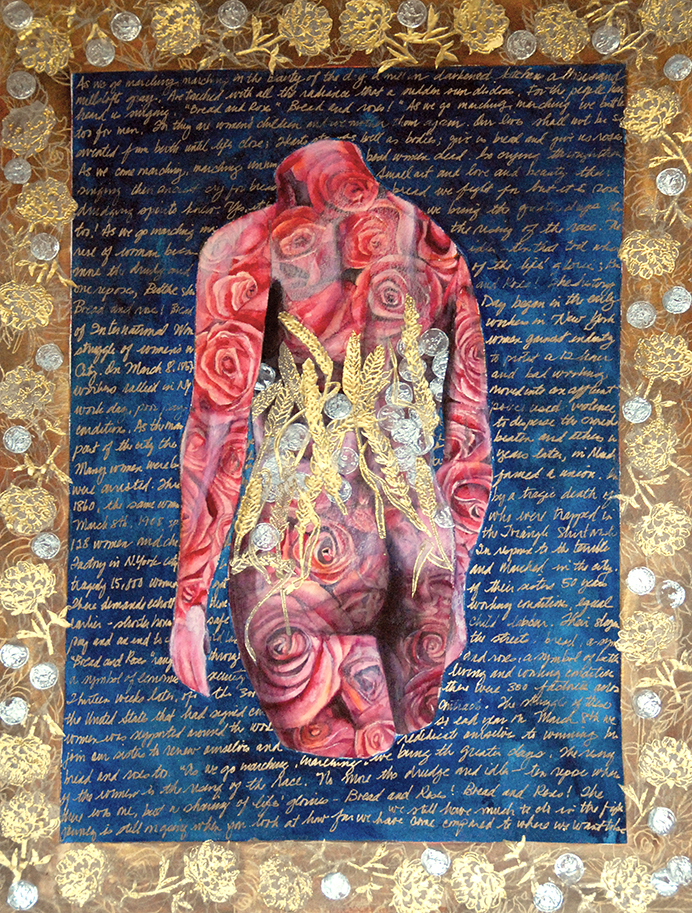|
|
|||||
|
|||||
|
|
|
|||||
|
|||||
|
|
|
|

|
|
|
International Women's Day
22 x 30 Watercolor on Paper This history of International Women’s Day began with the early struggle of women workers in New York. On March 8th, 1857, women garment industry workers rallied in New York City to protest a 12-hour working day, poor pay and bad working conditions. As the marchers moved into an affluent section of the city, police used violence to disperse the crowd. Many women were beaten and others arrested. Three years later, in March 1860, these same women – garment workers and textile workers, formed a union. Then on March 8th, 1908, spurred by the tragic death of 128 women and children trapped in a fire in the Triangle Shirtwaist Factory in New York City, 15,000 women workers marched on the city. Their demands echoed those of their sisters 50 years earlier – shorter hours, safe work conditions, equal pay and an end to child labor. Their slogan, “Bread and Roses” rang throughout the streets: bread, a symbol of economic security, and roses, a symbol for a better life and working conditions. Thirteen weeks later, over 300 factories across the United States had signed contracts. The struggle of these women was supported around the world. So, each year on March 8, we join our sisters to renew ourselves and rededicate ourselves to winning bread and roses too. |
|
|
© Sharalee Regehr 2024 Site by Little Brother |